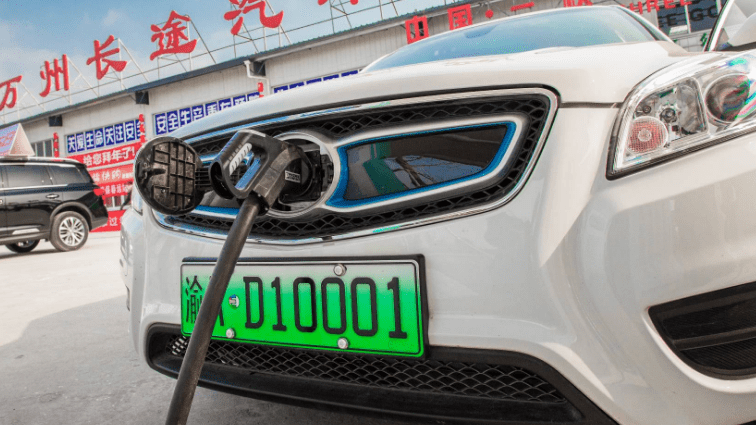China plans to upgrade its conventional submarines with lithium-ion batteries, a power move that could significantly increase its fleet’s combat and survival capabilities.
This month, South China Morning Post reported that China’s conventional submarine fleet might soon be powered by lithium-ion batteries, taking advantage of technological developments in the country’s electric vehicle (EV) industry, currently the world’s largest.
The report notes that China manufactures three-quarters of the world’s EV batteries, giving it a leading edge in battery technology.
Lithium-ion batteries can more than double a submarine’s underwater endurance and greatly improve its acceleration for high-speed operations, according to researchers from the Naval Submarine Academy in Qingdao quoted in the peer-reviewed Chinese journal Marine Electric and Electronic Engineering.
The South China Morning Post notes that the People’s Liberation Army-Navy has been trying to replace traditional lead-acid batteries with lithium-ion ones for over a decade but had hesitations because of the danger. China is believed to have the world’s largest conventional submarine force fleet with an estimated 60 to 70 boats.
Lead-acid batteries have been used in submarines since World War II. However, they suffer from low energy storage capacity, slow charging, weak power output, short lifespan and toxic fume generation. In contrast, lithium-ion batteries have a superior energy density, faster charge, greater discharge speed and longer battery life.
However, lithium-ion batteries suffer from thermal runaway and fire risk, which is particularly acute in submarines, GlobalData Thematic Research notes. One overheating cell can cause a chain reaction of thermal runaway failures in the entire battery bank, leading to catastrophic fires, it said.
Lead researcher Wang Fang said that safety solutions in lithium-ion technology dervived from extensive development in China’s electric vehicle industry have been discovered, mitigating some of the earlier risks, the South China Morning Post said.
“After solving these problems, the replacement of lead-acid batteries with lithium batteries in conventional submarines is just around the corner,” Feng notes.
The research team said that using low-cost, readily available iron and phosphate can replace the usual but dangerous nickel and cobalt combination in lithium-ion batteries, improving safety without compromising performance.
According to industry data cited by the South China Morning Post, the Chinese market’s number of electric vehicles using iron phosphate battery technology exceeds those using nickel-cobalt batteries.

The research team’s other safety innovations for submarine lithium-ion batteries include hard carbon and ceramic coating for battery packaging, which could improve their safety aboard submarines.
This development may also be enabled by China’s military-civil fusion strategy, which has eliminated past barriers between civilian research, commercial entities and military and defense industrial sectors. The strategy aims to exploit the dual-use nature of technologies with civilian and military applications such as lithium-ion batteries.
The South China Morning Post notes that Japan and South Korea operate lithium-ion batteries in their submarines, with the former doing so in 2018 and the latter in 2021. However, the article mentions that Japan uses manganese metal in its lithium-ion batteries to increase safety but at the cost of performance. In contrast, South Korea uses nickel and cobalt but has more safety features.
The source mentions that Germany and France have also developed prototype submarine lithium-ion batteries with plans for future military service.
Lithium-ion batteries have many advantages over air-independent propulsion (AIP) systems, such as the Stirling engine and closed-cycle steam turbines. Navies can pair them with hydrogen fuel cells to offset the former’s limitations.
Tyler Rogoway, in a 2020 article for The Warzone, notes that Stirling AIP submarines such as the Swedish Gotland class have to carry liquid oxygen aboard, which presents inherent dangers, takes up substantial internal space and includes many moving parts that require additional soundproofing. Stirling engines are also constrained by their low power output, which potentially limits them to short-range littoral combat operations.
Similarly, Rogoway notes that closed-cycle steam turbines such as the French Autonomous Submarine Energy Module (MESMA) share the same limitations with the Stirling engine since it needs an onboard ethanol and liquid oxygen supply.
In addition, Rogoway says that while the MESMA system can generate plenty of power for high-speed operations, it has many moving parts that likewise require costly soundproofing.
While fuel cells are a high-tech AIP solution, their main drawbacks stem from their various means of storing hydrogen fuel. These drawbacks range from poor gravimetric density, high oxygen demand, CO2 and other emissions and unproven technology.
Nevertheless, Rogoway mentions that while fuel cells are a high-tech AIP solution, it is not capable of ramping up power levels as fast as a MESMA system.
Rogoway notes that pairing lithium-ion with fuel cells in submarines can give extreme endurance, incredibly quiet operation, fast acceleration and high dash speeds, but cost and complexity are still significant issues.
Lithium-ion submarines also have the advantage of being quieter than nuclear-powered submarines. Although nuclear submarines have notionally unlimited range and endurance, their nuclear reactors generate detectable heat and thus must keep their cooling pumps always running, potentially creating detectable noise.
Moreover, nuclear submarines emit minute traces of radiation in their wake, which can be detectable with specialized wake-trailing sensors, such as the Soviet/Russian SOKS system.
The technical advantages of lithium-ion batteries can translate into operational advantages. Anand Datla and Paul Giarra note in an October 2021 Proceedings article that their faster discharge times equate to more rapid dive times and faster-submerged speed.

Meanwhile, their rapid recharging has considerable operational implications, including operations amidst the surface and underwater features of the strategic First Island Chain which runs from Japan, Taiwan and the Philippines.
A lithium-ion battery upgrade for China’s conventional submarines will significantly improve their capability to enforce a Taiwan blockade. Asia Times has previously reported that advanced conventional submarines, such as the Type 39 C/D, would be the workhorses if China moves to blockade Taiwan in a conflict scenario.
Such an upgrade would improve the capability of Chinese submarines to stealthily remain on patrol off the coast of Taiwan, interdicting movements by the Taiwanese and possibly US navies aimed at breaking a blockade of the self-governing island.

